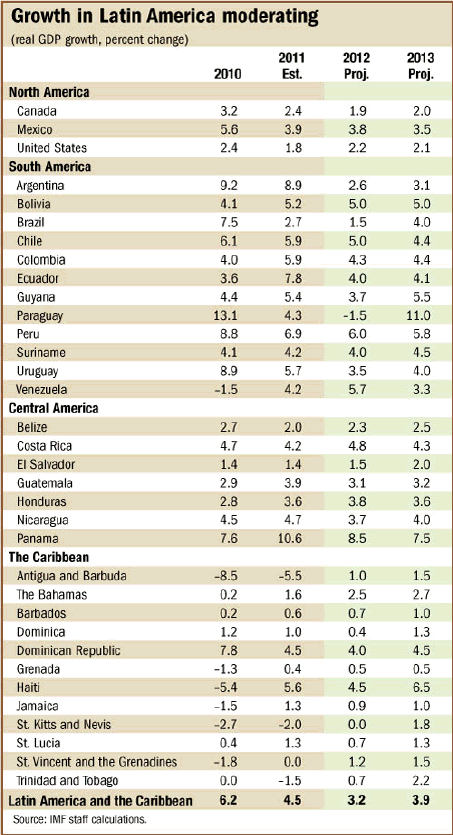
Typical street scene in Santa Ana, El Salvador. (Photo: iStock)
IMF Survey: Growth in Latin America Moderating but Resilient
October 12, 2012
- Latin America expected to grow by 3.2 percent in 2012 and 4 percent in 2013
- Euro debt crisis and U.S. fiscal cliff are biggest near-term risks
- Region should continue rebuilding fiscal buffers, safeguard financial stability
Growth in Latin America and the Caribbean is projected to pick up in 2013, after slowing this year, with risks continuing to dominate the outlook, the IMF said.

Auto worker in São Paulo, Brazil. Growth in Latin America is expected to moderate in 2012 (photo: Yasuyoshi Chiba/Newscom)
Regional Economic Outlook
Output growth in the region is expected to moderate to 3.2 percent in 2012, from 4.5 percent in 2011, reflecting the impact of earlier policy tightening and ebbing external demand. Going forward, output is projected to expand by around 4 percent in 2013, assisted by the global recovery and underlying favorable external conditions, the IMF said in its Regional Economic Outlook Update for the Western Hemisphere, released October 12 in Tokyo, Japan.
Global risks have shifted further to the downside. The two key near-term risks are an intensification of the debt crisis in Europe and a larger-than-desirable fiscal adjustment in the United States. Over the medium term, the main risk remains the possibility of a sharp slowdown in China—an important market for the region’s commodity exports.
“Latin America continues to face a global outlook with important tailwinds but significant downside risks,” said Saúl Lizondo, Associate Director of the IMF’s Western Hemisphere Department, at a press briefing held as part of the IMF-World Bank Annual Meetings.
With world interest rates expected to remain at very low levels for a prolonged period and commodity prices not far from historic highs, the double tailwinds of easy external financing and favorable commodity prices are likely to persist for many countries in the region. Against this backdrop, Lizondo emphasized that most countries should use the current juncture “to strengthen their resilience by continuing to rebuild fiscal buffers and safeguarding financial stability.”
Varied performance and policy challenges
The growth slowdown in 2012 has been particularly pronounced in Brazil, where global uncertainties and previous policy tightening had a larger-than-expected impact, particularly on private investment. In other financially integrated economies (Chile, Colombia, Mexico, and Peru) growth remains robust, slowing only moderately. With output near or above potential levels in these economies, the report recommends these countries to persist in their fiscal consolidation efforts. The report also notes that macroprudential policies could be useful to keep borrowing and lending under control, and that exchange rate flexibility should continue to help buffer shocks and discourage speculative capital flows.
Policy challenges are more pressing for a group of commodity exporting countries with weaker policy frameworks. These countries generally lack the fiscal buffers to effectively deal with external shocks, as they have largely consumed the bulk of windfall commodity revenues.
Growth has been generally resilient in much of Central America. The report projects that most countries in this subregion will grow in line with potential (about 3½ percent), consistent with a gradual recovery in exports to and remittances from the United States. However, external imbalances remain high and fiscal consolidation efforts have waned, with public debt ratios well above the levels before the global financial crisis of 2008-09. To reduce vulnerabilities and increase buffers against risks, these countries should give high priority to regaining fiscal space.
Growth prospects are weakest in the tourism-dependent economies of the Caribbean, which continue to navigate in a sea of elevated debt, weak external demand, and unfavorable terms of trade, the analysis said. These economies are expected to grow by only 1 percent in 2012, after a deep and protracted recession. In these countries, greater resolve is required in reducing public debt, while adopting structural reforms that can boost growth and competitiveness.



